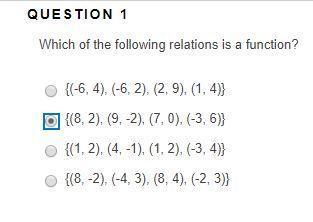
Mathematics, 04.12.2019 05:31 migos0917
Suppose you throw a ball with horizontal part of the velocity x'(0) = 20 m/s and vertical part of the velocity y'(0) = 10 m/s. assuming that the gravitational force is constant (g = 9.8 m/s2) and that air resistance is proportional to the square of the velocity we obtain z" =-kk' /(x)2 + (y')2 " =-9 - ky' (x)2 + (y')2 x(0) = 0, x'(0) = 20, y(0) = 0, y(0) = 10. assuming the air resistance constant k= 0.1 m-1 find (a) the maximum height the ball will attain (b) how far from you will the ball hit the ground. details: for solutions of all differential equations you need to use the classical runge-kutta method developed in class. in parts a and b above you need to use newton's method.

Answers: 1
Another question on Mathematics

Mathematics, 21.06.2019 17:00
Determine the fraction of total interest owed. after the fourth month of a 12-month loan: the numerator is: {(n + ) + (n + ) + (n + ) + (n + )} = , and the denominator is: {(n) + (n + 1) + + (n + )} = . therefore, the fraction is numerator/denominator (to the nearest tenth) =
Answers: 1

Mathematics, 21.06.2019 18:10
Find the smallest number by which the given number should be divided to make a perfect cube(with steps or the answer will get reported) a.108 b.2187
Answers: 1

Mathematics, 21.06.2019 18:30
Which number line represents the solution set for the inequality -1/2x> 24?
Answers: 2

You know the right answer?
Suppose you throw a ball with horizontal part of the velocity x'(0) = 20 m/s and vertical part of th...
Questions

English, 05.11.2019 22:31








History, 05.11.2019 22:31

Chemistry, 05.11.2019 22:31



Social Studies, 05.11.2019 22:31


Business, 05.11.2019 22:31

Physics, 05.11.2019 22:31



English, 05.11.2019 22:31

History, 05.11.2019 22:31




